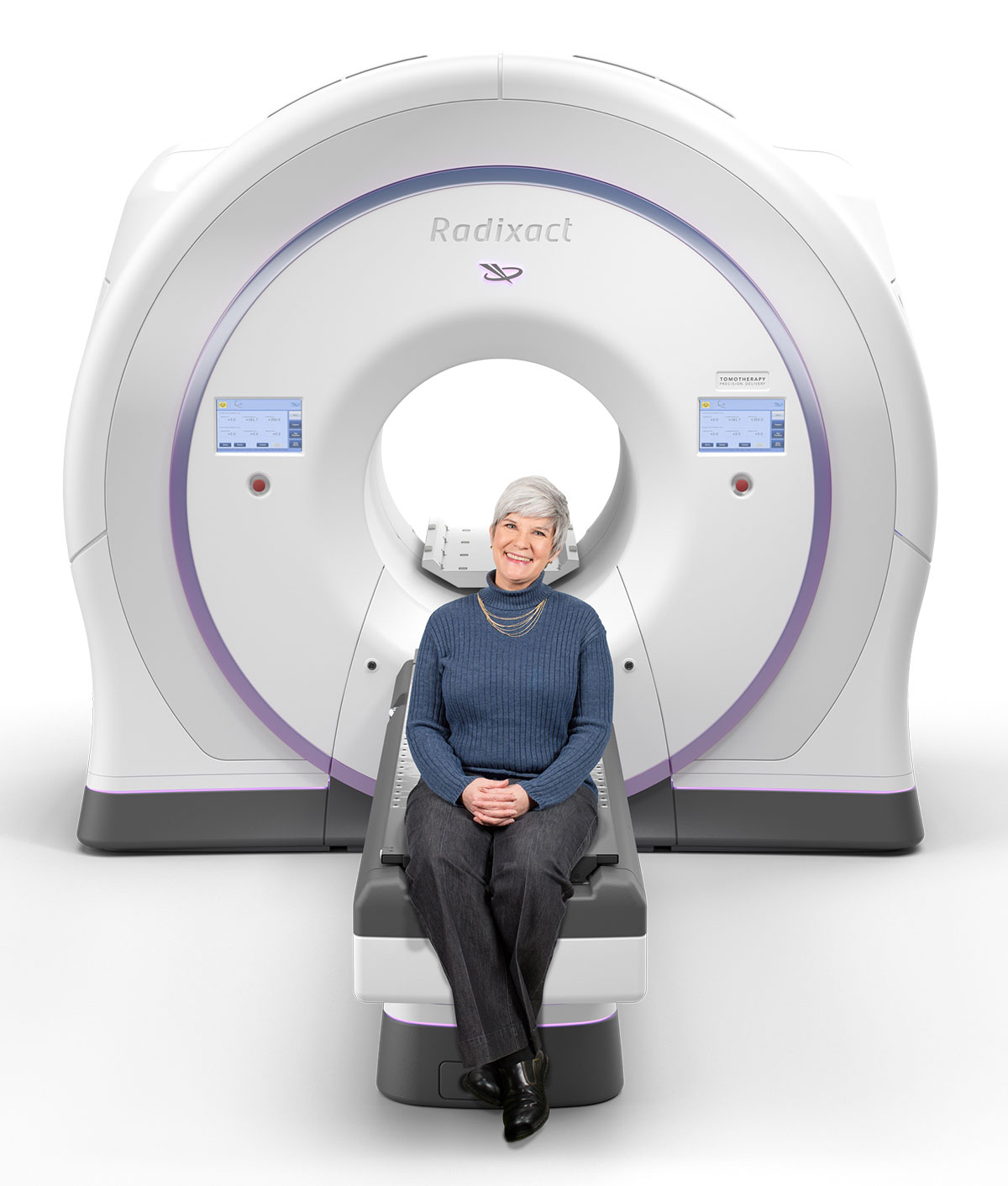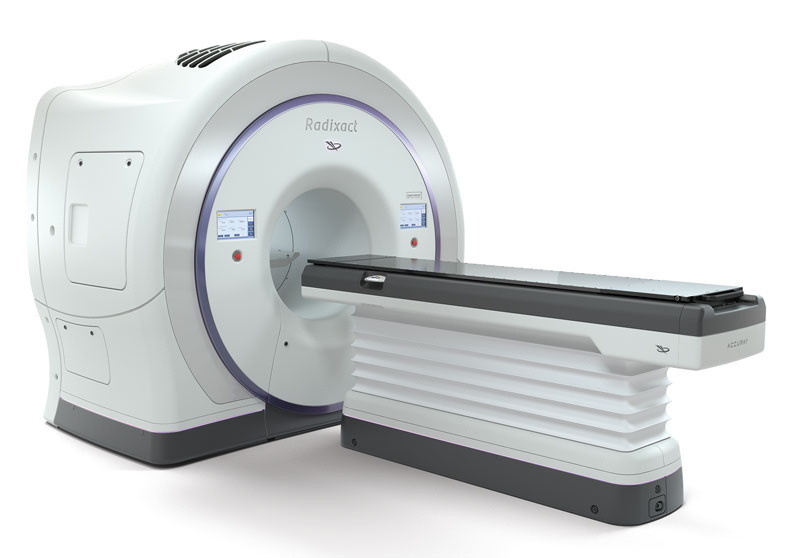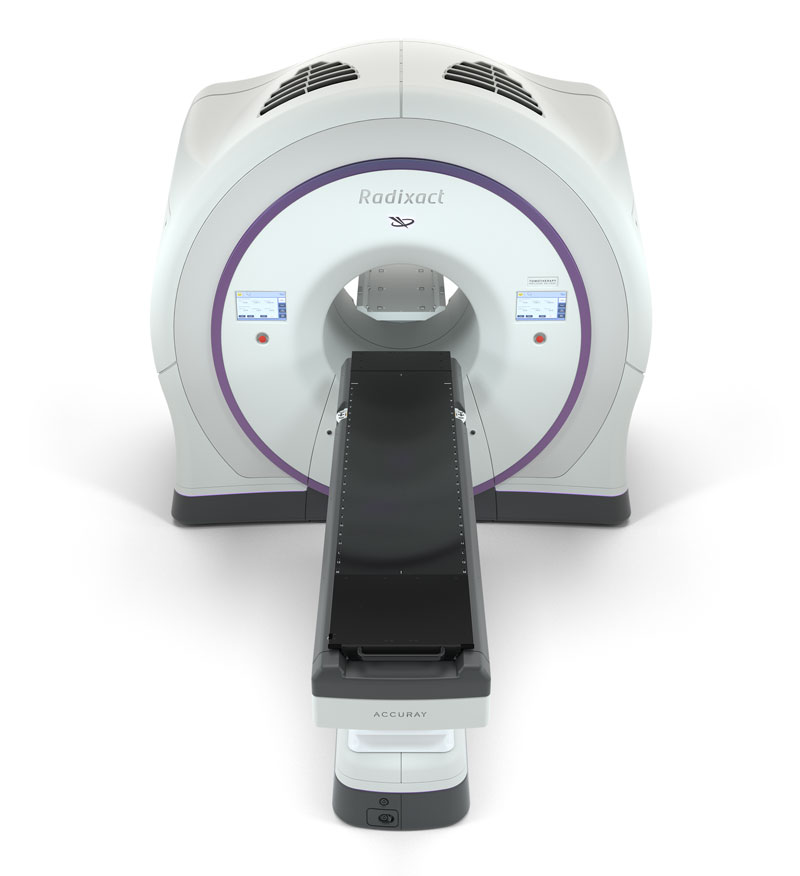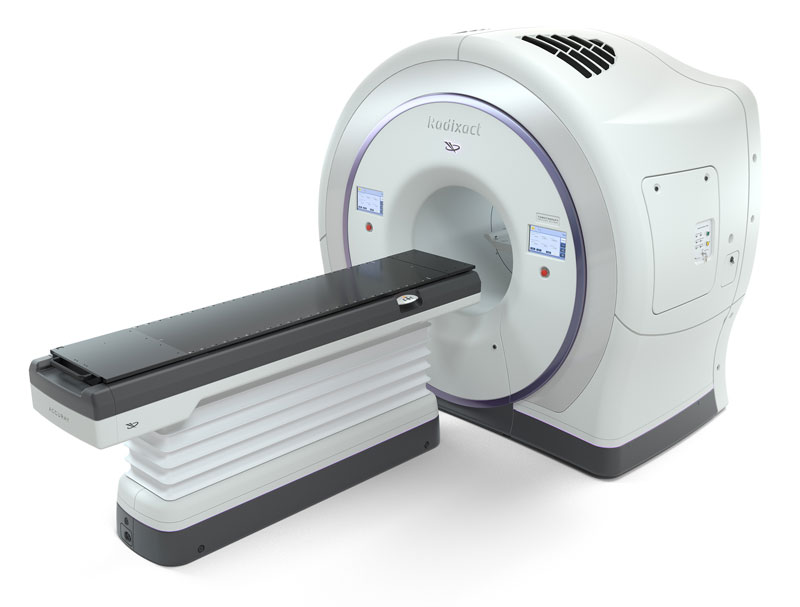Ask a physician if Radixact treatment is right for you
You deserve the best possible treatment for your anal cancer. Find a physician in your area offering the Radixact System – and find out if Radixact treatment is right for you.
Patients with anal cancers are achieving successful outcomes through advanced treatments that combine chemotherapy and radiation therapy. Because anal cancers are located in close proximity to the rest of the digestive tract, bladder and reproductive organs, precision is critical to reducing the risk of short- and long-term side effects. Precision in radiation dose delivery is also necessary to help control the disease. External beam radiation therapy (EBRT), when a machine aims high-energy rays at the tumor from outside the body, is the most common way to treat stage I (with basal membrane invasion) through stage III anal cancers. According to the American Cancer Society and multiple healthcare professional organizations, intensity-modulated radiation therapy (IMRT) is the preferred type of EBRT treatment.
The TomoTherapy® platform, including the next-generation Radixact® System, is the only system designed from the ground up to deliver integrated image-guided intensity-modulated radiation therapy (IG-IMRT), an enhanced form of IMRT that uses images acquired before each treatment to help ensure accurate patient and tumor positioning. The platform was also the first to feature helical radiation delivery and integrated CT imaging, designed to deliver more precisely the radiation dose so it conforms to the tumor and helps minimize dose to healthy tissue. IG-IMRT is continuously delivered from multiple 360 degrees rotation around the patient’s body as the treatment table also moves – providing a highly precise, personalized and non-invasive option for treating anal cancer.

You deserve the best possible treatment for your anal cancer. Find a physician in your area offering the Radixact System – and find out if Radixact treatment is right for you.
The Radixact System with TomoTherapy technology is one of the most integrated, advanced systems for comprehensive cancer treatment available today. The Radixact System enables precise delivery of IG-IMRT, an advanced type of IMRT, for the treatment of anal cancer. The use of TomoTherapy technology, as well as IMRT, are supported by published clinical studies.

Radiation therapy can provide a non-surgical, non-invasive treatment option for many anal cancer patients. An extremely precise type of radiation therapy, called image-guided, intensity-modulated radiation therapy (IG-IMRT), can provide superior dose-delivery precision to enhance treatment efficacy while helping to reduce the risk of gastrointestinal and genitourinary side effects.
The TomoTherapy platform, including the next-generation Radixact System, is the only system designed from the ground up to deliver IG-IMRT and was the first to feature helical radiation delivery and integrated CT imaging – providing greater control of the radiation dose so it conforms precisely to the tumor and helps minimize dose to healthy tissue.
Instead of a single beam of radiation, the Radixact System divides each beam into many smaller, narrow “beamlets.” Every beamlet is individually optimized to a specific intensity of radiation that is targeted at the tumor, enabling customized and precise treatment delivery.
Thousands of these beamlets combine in the tumor to contribute to the total radiation dose each patient has been uniquely prescribed. This is called intensity-modulated radiation therapy (IMRT). An enhanced form of IMRT – image-guided intensity-modulated radiation therapy (IG-IMRT) – uses images acquired before each treatment to help ensure accurate patient and tumor positioning.

Radiation therapy combined with chemotherapy is typically the primary treatment for anal cancer. Radiation therapy can also be used after surgery to remove residual cancer or when there is a high risk of the tumor coming back. Your doctor may also use radiation therapy as a treatment for cancer that has recurred in the groin lymph nodes after your initial treatment, manage symptoms such as pain or bleeding, or control cancer that has spread to other areas of the body such as the liver or lungs.
The Radixact System provides the flexibility to adapt radiation therapy to any patient’s anal cancer anatomy, helping to enable the delivery of extremely precise and accurate radiation doses to improve treatment outcomes and help reduce the risk of side effects that may impact patients’ quality of life.
Treatment with the Radixact System is a non-surgical, non-invasive, outpatient procedure that does not require incisions or general anesthesia. Most patients will not require hospitalization or a long recovery time.

The Radixact System can be a powerful treatment option for a wide range of anal cancer patients, and in some cases for patients who have previously undergone radiation or surgical procedures, and unfortunately experience a recurrence.

References:
1 Joseph K., Nijjar Y., Warkentin H. et al. Prospective phase II study of tomotherapy based chemoradiation treatment for locally advanced anal cancer. Radiother Oncol. 2015 Nov;117(2):234-9.
2 De Bari B., Jumeau R., Bouchaab H. et al. Efficacy and safety of helical tomotherapy
with daily image guidance in anal canal cancer patients, Acta Oncologica, 55:6, 767-773.
3 Mitra D., Hong T.S., Horick N. et al. Long-term outcomes and toxicities of a large cohort of anal cancer patients treated with dose-painted IMRT per RTOG 0529. Advances in radiation oncology. 2017;2(2):110–117.
4 Fredman E.T., Abdel-Wahab M., Kumar AMS. Influence of radiation treatment technique on outcome and toxicity in anal cancer. J Radiat Oncol. 2017;6(4):413-421.
© 2024 Accuray Incorporated. All rights reserved.
Educating others about your experience with the Radixact® or TomoTherapy® System can help others who face similar decisions about their own cancer treatment choices.
If you are interested in sharing your story, please fill out the form below and an Accuray representative will contact you.